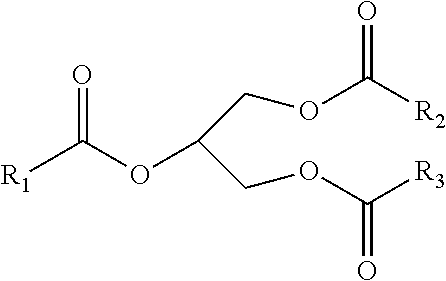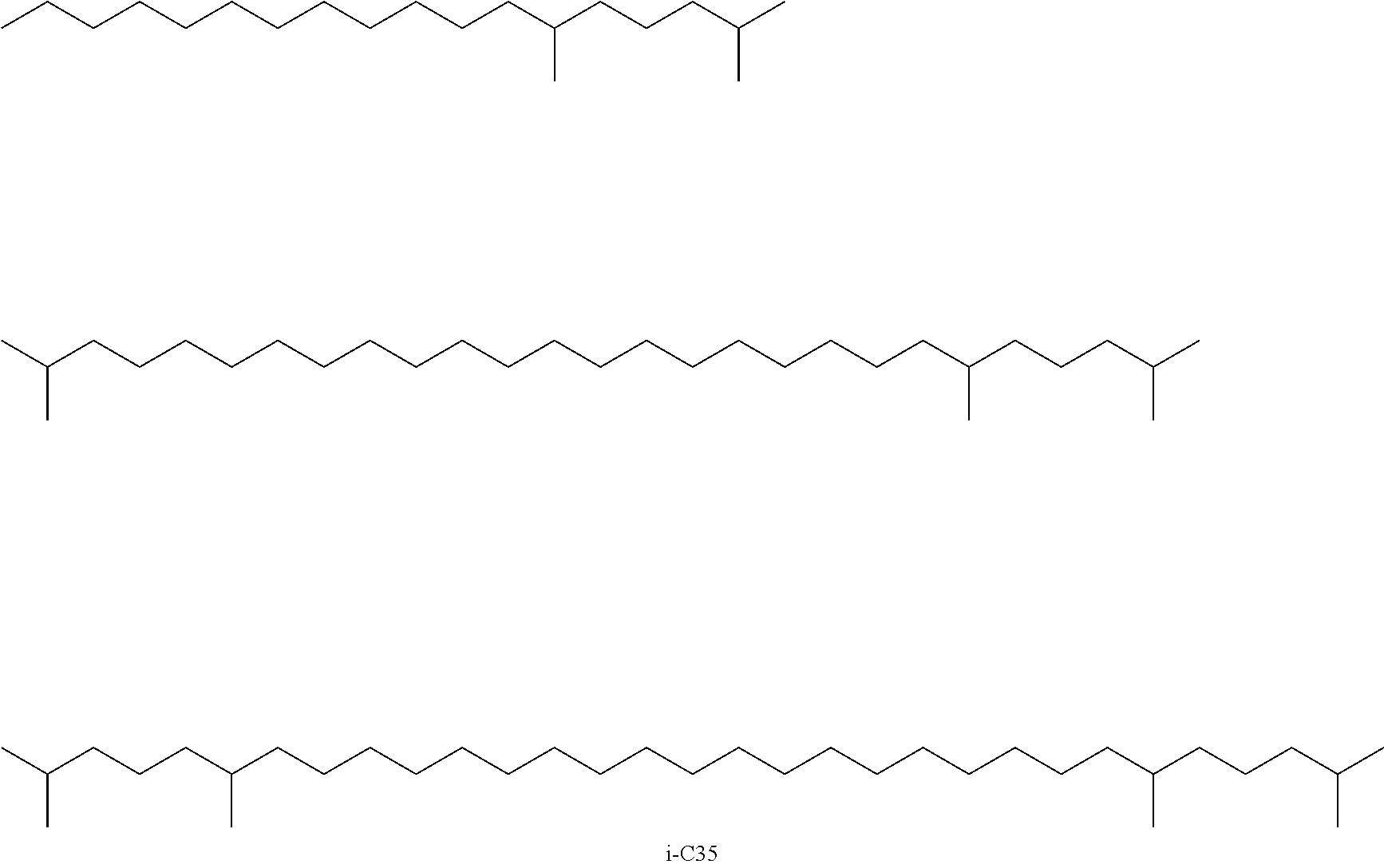Method for Production of Hydrocarbons by Increasing Hydrocarbon Chain Length
a technology of hydrocarbon chain and hydrocarbons, which is applied in the direction of fatty acid chemical modification, physical/chemical process catalyst, separation process, etc., can solve the problems of limited use of lube esters, harmful effects on atmosphere and environment, exhaustion of fossil raw materials, etc., and achieves the effect of increasing the hydrocarbon chain length and high quality
- Summary
- Abstract
- Description
- Claims
- Application Information
AI Technical Summary
Benefits of technology
Problems solved by technology
Method used
Image
Examples
example 1
[0064]A composition, consisting of saturated stearic fatty acid (derived from vegetable oil), diluted with paraffinic co-feed in ratio of 1:1, was subjected to hydrotreatment. Treatment was carried out in three different conditions (tests 1-3) in presence of a sulphidized NiMo catalyst on alumina support. WHSV and hydrogen to hydrocarbon ratio is calculated from the amount of saturated fatty acid feed in vessel. Process conditions and hydrocarbon distribution yields are presented in table 1.
TABLE 1Process conditions in hydro treatment and product distributionReactorConditionsPres-H2 / Temp.sureHCWHSV≧C24C11-C23TestCatalyst° C.MPaN l / l1 / h%%1NiMo + S3650.401500.501.192.72NiMo + S3650.201500.505.189.83NiMo + S3650.251000.5013.681.4
[0065]The obtained products were analyzed with gas chromatography. Ketones are identified in the gas chromatograms, which indicate that linear high molecular paraffins are formed through ketonization reactions.
example 2
[0066]A mixture of saturated stearic fatty acid (30 wt-%) (derived from vegetable oil), and rape seed oil (70 wt-%) was subjected to hydrotreatment. Treatment was carried out in presence of sulphidized NiMo catalyst (on alumina carrier) at conditions shown in table 2. Hydrocarbon distribution of the products formed is shown in table 2.
TABLE 2Process conditions in hydro treatment and product distributionReactorConditionsPres-H2 / Temp.sureHCWHSV≧C24C11-C23TestCatalyst° C.MPaN l / l1 / h%%1NiMo + S3650.72000.529.557.5
[0067]The obtained products were analyzed with gas chromatography. Ketones are identified in the gas chromatograms, which indicate that linear high molecular paraffins are formed through ketonization reactions.
[0068]The above examples show that it is possible to co-produce diesel range hydrocarbons components together with base oil components in the same reactor conditions using only a hydrotreatment catalyst.
PUM
| Property | Measurement | Unit |
|---|---|---|
| pressure | aaaaa | aaaaa |
| temperature | aaaaa | aaaaa |
| pressure | aaaaa | aaaaa |
Abstract
Description
Claims
Application Information
 Login to View More
Login to View More - R&D
- Intellectual Property
- Life Sciences
- Materials
- Tech Scout
- Unparalleled Data Quality
- Higher Quality Content
- 60% Fewer Hallucinations
Browse by: Latest US Patents, China's latest patents, Technical Efficacy Thesaurus, Application Domain, Technology Topic, Popular Technical Reports.
© 2025 PatSnap. All rights reserved.Legal|Privacy policy|Modern Slavery Act Transparency Statement|Sitemap|About US| Contact US: help@patsnap.com


